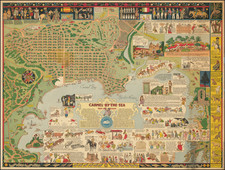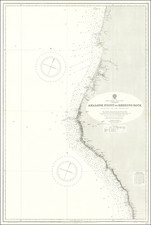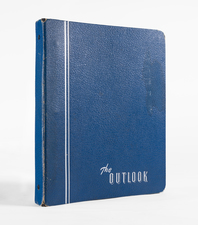Rare panoramic photograph of Playa del Rey, shortly after it was acquired by The Beach Land Company in 1902.
At the time of acquisition of this photo, we were told that it had come from the estate of the original developer of Playa Del Rey.
A very early panoramic photo of the boardwalk and development as of the turn of the beginning of the 20th Century in Playa del Rey, perhaps the earliest large photograph of the map after its acquisition and name change. The view extends to the North toward Santa Monica and includes Marina Del Rey and the Ballona Lagoon in the foreground, showing some of the earliest buildings, including what would appear be a hotel structure with tent cabins around it across the Lagoon.
Playa del Rey was originally named Port Ballona, at the mouth of Ballona Creek, originally in Rancho La Ballona, in what is now Marina Del Rey and Culver City. The concept of the creation of Port Ballona was pursued by the Santa Fe Railroad in the 1880s, which went so far as to draw up deslgn sketches for the Port. At the time, the land which would be come Playa Del Rey was owned by Joseph Curtis, E. H. Sweetser and C. J. Harrison, who laid out and subdivided by map recorded on December 24, 1886.
The land within "The Palms" was bounded by Ballona Road, now Washington Boulevard, by First Street, now Overland Avenue, and by Manning Avenue. The subdivision was carved out of a five hundred-acre tract which was a part of Macedonio Aguilar's allotment in the partition of the Rancho. Curtis, Sweetser and Harrison paid $40, 000 for the five hundred acres. The new project included a beach and land around the lagoon, all nicely subdivided and adorned with a long board walk.
In 1902, the property was acquired by The Beach Land Company, Henry P. Barbour, president, which acquired from Louis and Joseph Mesmer nearly all of the town of Port Ballona and adjoining property. It gave a sixty-foot right of way to The Los Angeles-Hermosa Beach & Redondo Railway Company, succeeded by Los Angeles Pacific Company, which, in 1911, was to consolidate with the Pacific Electric Railway Company.
A new building period began. A pavilion costing $100,000.00 was built. An eighteen-mile speedway for automobile racing was constructed. The Hotel Del Rey wa built. The lagoon blossomed out with boathouse and grandstands. An inclined railway with two cars - "Alphonse" and "Gaston" - carried passengers up to an observation platform on the palisades above.
Playa Del Rey was on all the excursion routes, and when the electric railroad established its famous "Balloon Trip" for the tourists, Playa Del Rey was a favorite stop. A fish dinner was served in the pavilion. The tourists were given time to look at the cliffs, the beach, and the lagoon with its "longest bridge span of reinforced concrete in the world," before being carried on to gather moonstones on Moonstone Beach near Redondo. Many bought lots and built attractive seaside homes along the beach in front of Rancho La Ballona.
For many years afterward Playa Del Rey was a popular seaside resort. On holidays it was crowded with auto-racing and boat-racing fans. But when the pavilion and hotel burned down, when the grandstand was removed and when sand filled the boat course, Playa Del Rey fell into decay. It would not boom again until the early 1920s, when the area became Palisades Del Rey.










![[ Southern California Tourism ] Hunting and Fishing in Southern California on the Santa Fe](https://storage.googleapis.com/raremaps/img/small/101613.jpg)


![[ Southern & Central California Yokuts ] The Southern and Central Yokuts](https://storage.googleapis.com/raremaps/img/small/103201.jpg)
